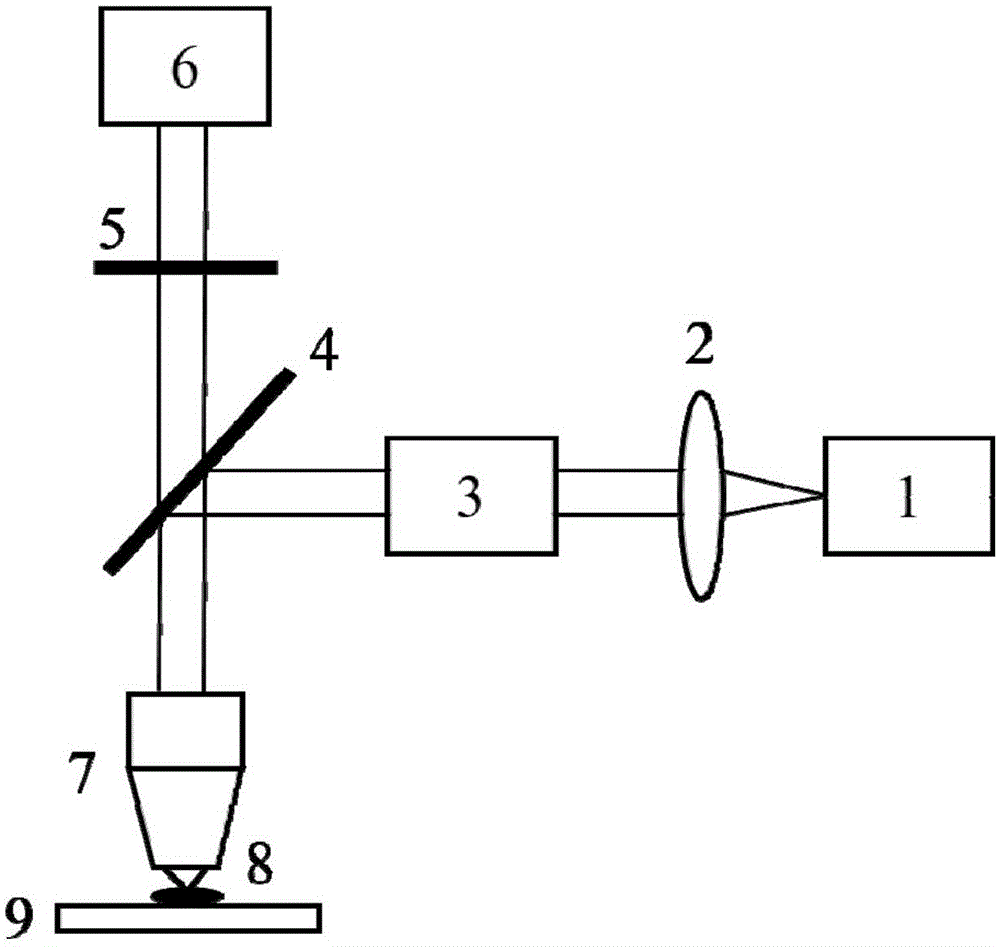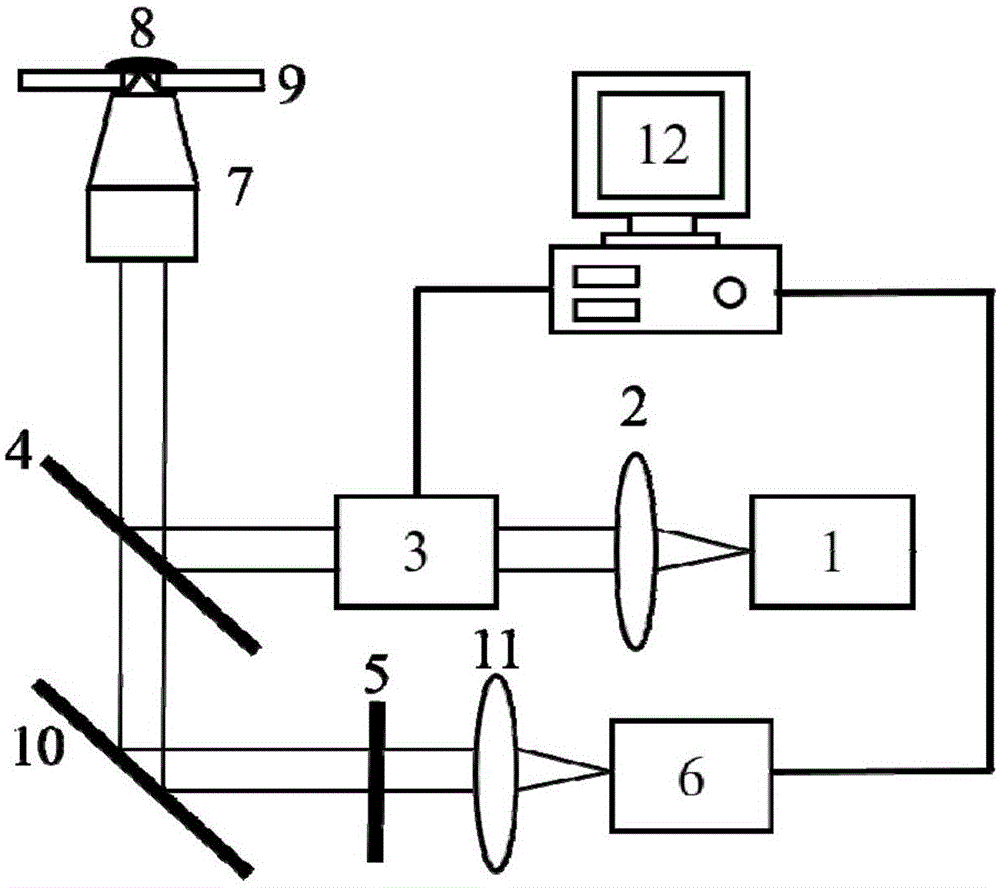New use of neodymium ion sensitized up-conversion nanocrystal, and high-resolution multi-photon microscopic system
A microscopic system and multiphoton technology, applied in the field of optical microscopy, can solve the problems of unfavorable multiphoton high-resolution microscopic imaging, fall in the ultraviolet band, and limit widespread promotion, and achieve easy high-order multiphoton imaging and easy Procurement, effect of increasing resolution
- Summary
- Abstract
- Description
- Claims
- Application Information
AI Technical Summary
Problems solved by technology
Method used
Image
Examples
Embodiment 1
[0030] The basic structure of the multiphoton microscopic imaging system of the present invention is as follows: figure 1 As shown, 1 is a diode laser, 2 is a beam expander lens group, 3 is a scanning galvanometer, 4 is a short-pass dichroic mirror, 5 is a fluorescence filter, 6 is a photodetector, 7 is an objective lens, and 8 is a sample, 9 is the stage. The central wavelength of the steady-state continuous laser is less than 800nm. The microscope optical system includes a beam expander lens group 2, a scanning galvanometer 3, a short-pass dichroic mirror 4, a fluorescence filter 5, a photodetector 6 and an objective lens 7. The sample 8 is placed on on stage 9. When working, the short-wavelength continuous laser light generated by the diode laser 1 is converted into spatial light by an optical fiber and then enters the microscope optical system. A beam expander lens group 2, a scanning galvanometer 3 and a short-pass two-way Chromatic mirror 4, wherein short-pass dichroic...
PUM
 Login to View More
Login to View More Abstract
Description
Claims
Application Information
 Login to View More
Login to View More - R&D
- Intellectual Property
- Life Sciences
- Materials
- Tech Scout
- Unparalleled Data Quality
- Higher Quality Content
- 60% Fewer Hallucinations
Browse by: Latest US Patents, China's latest patents, Technical Efficacy Thesaurus, Application Domain, Technology Topic, Popular Technical Reports.
© 2025 PatSnap. All rights reserved.Legal|Privacy policy|Modern Slavery Act Transparency Statement|Sitemap|About US| Contact US: help@patsnap.com



